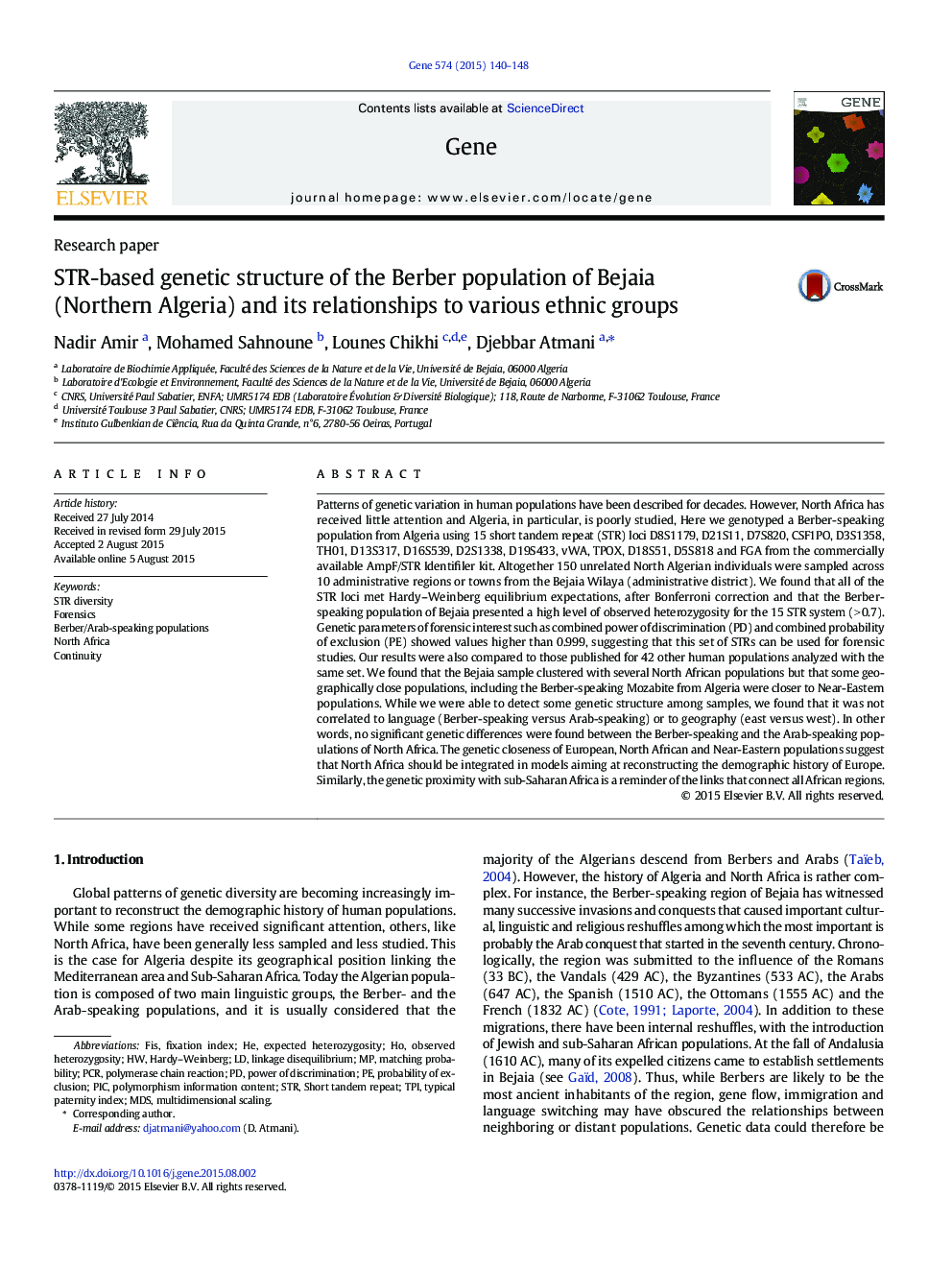| Article ID | Journal | Published Year | Pages | File Type |
|---|---|---|---|---|
| 2815389 | Gene | 2015 | 9 Pages |
•STR-based genetic structure of the Berber population of Bejaia (Northern Algeria) was analyzed for the first time.•High level of heterozygosity was observed for the 15 STR analyzed.•The observed linkage disequilibrium was attributed to allele frequency and random sampling fluctuation.•The tree analysis showed that the Bejaia population clustered with several North African populations.
Patterns of genetic variation in human populations have been described for decades. However, North Africa has received little attention and Algeria, in particular, is poorly studied, Here we genotyped a Berber-speaking population from Algeria using 15 short tandem repeat (STR) loci D8S1179, D21S11, D7S820, CSF1PO, D3S1358, TH01, D13S317, D16S539, D2S1338, D19S433, vWA, TPOX, D18S51, D5S818 and FGA from the commercially available AmpF/STR Identifiler kit. Altogether 150 unrelated North Algerian individuals were sampled across 10 administrative regions or towns from the Bejaia Wilaya (administrative district). We found that all of the STR loci met Hardy–Weinberg equilibrium expectations, after Bonferroni correction and that the Berber-speaking population of Bejaia presented a high level of observed heterozygosity for the 15 STR system (> 0.7). Genetic parameters of forensic interest such as combined power of discrimination (PD) and combined probability of exclusion (PE) showed values higher than 0.999, suggesting that this set of STRs can be used for forensic studies. Our results were also compared to those published for 42 other human populations analyzed with the same set. We found that the Bejaia sample clustered with several North African populations but that some geographically close populations, including the Berber-speaking Mozabite from Algeria were closer to Near-Eastern populations. While we were able to detect some genetic structure among samples, we found that it was not correlated to language (Berber-speaking versus Arab-speaking) or to geography (east versus west). In other words, no significant genetic differences were found between the Berber-speaking and the Arab-speaking populations of North Africa. The genetic closeness of European, North African and Near-Eastern populations suggest that North Africa should be integrated in models aiming at reconstructing the demographic history of Europe. Similarly, the genetic proximity with sub-Saharan Africa is a reminder of the links that connect all African regions.
Graphical abstractFigure optionsDownload full-size imageDownload high-quality image (121 K)Download as PowerPoint slide
